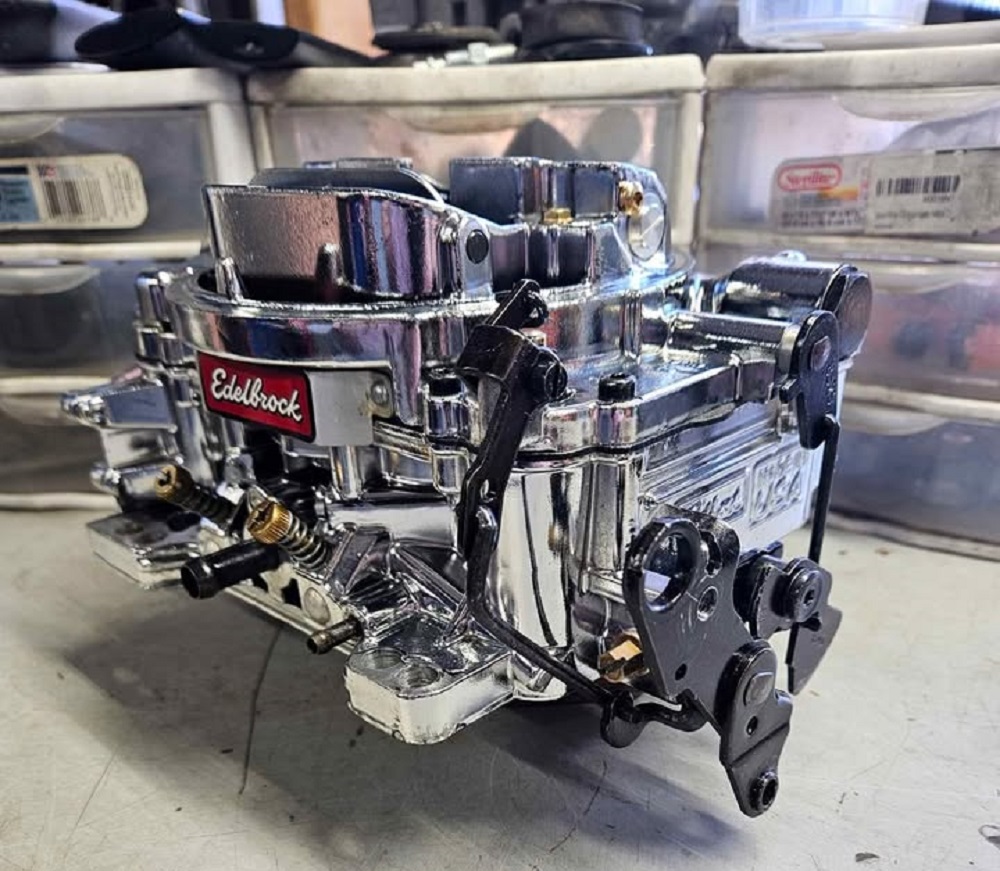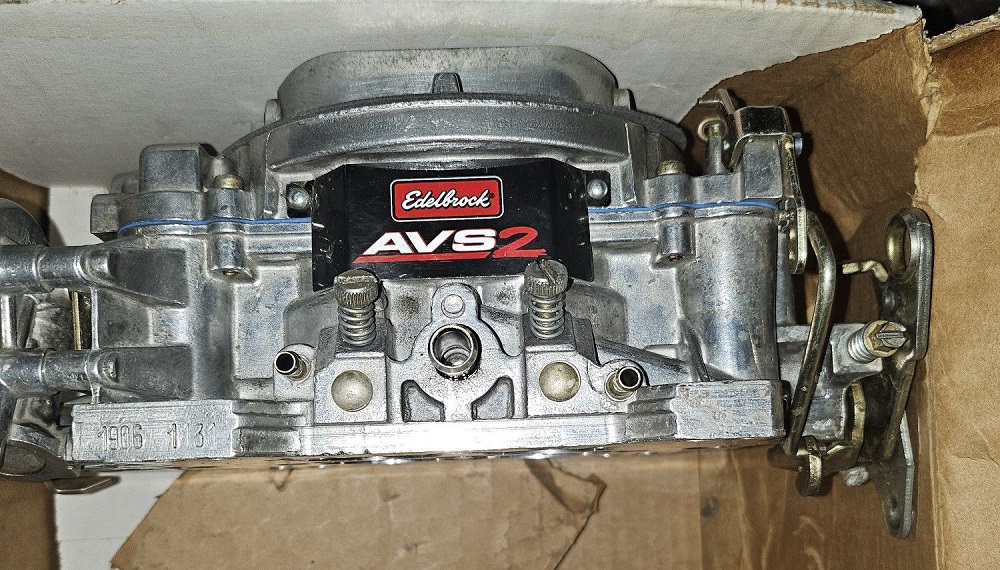Choosing the right carburetor can make all the difference between a smooth, responsive ride and ongoing performance issues.
If you’ve dealt with hesitation during acceleration or inconsistent fuel delivery, the Edelbrock AVS and AVS2 provide solutions tailored to different driving needs.
Let’s explore how these options compare to help you find the ideal fit for your engine.

1. Design Principles at a Glance
The Core Features of AVS
The AVS carburetor delivers consistent performance through its straightforward yet effective architecture. Its design centers around downleg boosters, which are standard in many traditional carburetors.
These boosters provide dependable fuel delivery but may require careful tuning to ensure smooth transitions, especially in vehicles with unique setups.
The AVS’s hallmark is its adjustable air valve flap, which allows for fine-tuning secondary transitions to suit various engine needs.
The AVS remains a solid option for users prioritizing reliability without a steep learning curve, offering moderate performance improvements without needing advanced mechanical expertise.
What Sets the AVS2 Apart
Edelbrock introduced the AVS2 as an evolution of the original design, incorporating annular flow boosters to enhance fuel atomization. This refinement improves throttle response, particularly at lower speeds and during part-throttle conditions.
With the same adjustable air valve feature as its predecessor, the AVS2 offers a familiar tuning experience while addressing common issues like off-idle stumble and mid-range hesitation.
This upgrade suits enthusiasts who want sharper responsiveness and smoother drivability in everyday use, particularly in stop-and-go traffic or under light acceleration loads.
Materials and Craftsmanship
The AVS and AVS2 feature durable cast aluminum bodies, which help reduce weight without sacrificing strength. Throttle plates and shafts maintain consistent quality across both models, ensuring reliable performance.
However, the AVS2’s boosters and passages are slightly optimized for improved airflow and fuel distribution. The gaskets and hardware used in both models meet Edelbrock’s usual high standards, ensuring a dependable fit and finish.
2. Fuel Delivery and Booster Differences
Traditional Downleg Boosters in the AVS
The AVS uses downleg boosters to introduce fuel into the intake system. These boosters provide a straightforward delivery method, functioning reliably in most applications.
However, they can occasionally lag during sudden throttle changes or in setups with lower manifold vacuum, such as heavier vehicles or those equipped with taller gears.
This momentary lag often manifests as a “tip-in stumble,” particularly noticeable when pulling away from a stop or during abrupt acceleration. While tuning can help reduce this issue, achieving optimal performance requires precision and experience.
The Annular Booster Advantage in the AVS2
In contrast, the AVS2 employs annular boosters, which deliver fuel through multiple orifices around the booster’s circumference.
This design improves atomization, ensuring a finer, more uniform fuel spray for better air-fuel mixing. As a result, the AVS2 provides a smoother driving experience, especially at low speeds and during part-throttle conditions.
The annular boosters excel in addressing common issues like off-idle stumble and mid-range hesitation, offering noticeable improvements in drivability.
They are also more adaptable to a variety of engine configurations, reducing the need for extensive tuning adjustments.
However, this advanced design can reveal underlying engine issues, such as vacuum leaks or timing problems, requiring users to pay closer attention during installation and tuning.

3. Secondary Air Valve and Transition
AVS Secondary Air Valve Mechanics
The AVS carburetor features an adjustable counterweighted air valve, a hallmark of its design that allows users to control how quickly the secondaries open.
This adjustability is essential for fine-tuning performance, especially when dealing with varying vehicle weights, gearing setups, or engine characteristics.
A more conservative air valve setting is often necessary in heavier vehicles or those with highway gears to prevent sudden lean conditions or bogging during acceleration.
A quicker secondary opening can provide the desired power boost for larger-displacement or high-output engines without hesitation.
However, dialing in the correct settings requires attention to the vehicle’s specific needs and may involve trial and error.
Secondary Refinements in the AVS2
The AVS2 retains the adjustable air valve mechanism, providing the same level of customization as the AVS. However, adding annular boosters enhances the secondary transition by delivering fuel more efficiently and precisely.
This refinement reduces the chances of bogging during secondary engagement and creates a more seamless transition between primaries and secondaries.
One notable improvement with the AVS2 is its ability to offset minor mismatches in air valve tension. The annular boosters ensure fuel atomization keeps pace with airflow, resulting in smoother throttle response even if the secondary opening is slightly aggressive.
However, suppose the secondaries are set to open too quickly, and fuel delivery becomes overly generous. This can lead to a momentary, overly rich condition, requiring careful tuning to avoid performance dips.
4. Application-Specific Insights
Mild Street Engines
The AVS carburetor is often sufficient for smaller V8s or mildly tuned big-block engines where reliability and ease of use are the primary concerns.
Its straightforward design provides consistent performance for drivers looking for modest improvements without extensive tuning.
However, some users may encounter occasional hesitation or stumble during part-throttle transitions, especially in stop-and-go driving.
The AVS2, with its annular boosters, offers a noticeable advantage in these scenarios. Its refined atomization smooths out low-speed and part-throttle operations, making it an excellent choice for daily drivers.
Drivers who frequently deal with urban traffic will appreciate its ability to pull away from stops more confidently and without hesitation.
Performance-Oriented Builds
When paired with the correct tuning, the AVS can deliver solid results for enthusiasts with moderate performance builds.
It handles moderate cam profiles and improved heads reasonably well, though it may reveal flat spots under higher loads or during aggressive acceleration.
The AVS2 excels in performance applications that require sharper throttle response and better mid-range fueling. Its ability to distribute fuel more evenly across a broader RPM range makes it ideal for muscle cars or pickups that require crisp mid-range torque.
The annular booster design accommodates more aggressive cams and larger displacement engines without sacrificing drivability.
Towing and Off-Road Scenarios
The AVS is reliable in towing or off-road conditions. Its adjustable secondaries can be tailored to prevent overfueling under load. However, users who frequently switch between towing and normal driving may need to retune the carburetor.
The AVS2, on the other hand, provides a more consistent fueling experience in these scenarios. The annular boosters stabilize fuel delivery during sudden throttle changes, ensuring smooth performance on hill climbs or uneven terrain.
Its design reduces the likelihood of bogging, even under varying load conditions, making it a dependable choice for trucks and off-road enthusiasts.
5. Tuning Factors and Challenges
AVS Tuning Considerations
The AVS carburetor offers a relatively straightforward tuning process, but achieving optimal performance still requires attention to key details. Setting the idle mixture and speed correctly is essential to avoid stumbling when transitioning to the main circuits.
Also, while the AVS provides a good range of metering rod and jet calibrations, some users report that the carburetor’s “sweet spot” can be narrower, demanding precise adjustments.
A common challenge with the AVS is matching the secondary air valve weight to the engine’s vacuum signals. If mismatched, it can result in abrupt secondary engagement or even momentary lean conditions, impacting drivability under load.
AVS2 Tuning Insights
The AVS2 simplifies tuning in many ways, thanks to its annular boosters, which naturally smooth transitions and reduce abruptness.
This improvement also makes setting idle and part-throttle performance easier, as the advanced atomization compensates for minor calibration mismatches.
However, achieving peak performance still requires careful attention to idle vacuum and appropriate rod and jet choices.
The AVS2 typically performs well out of the box, but users can refine efficiency and power further with additional tuning.
Potential pitfalls arise when other engine factors, such as ignition timing or vacuum leaks, are overlooked. In these cases, the carburetor may be blamed for performance issues elsewhere in the setup.
6. Real-World Performance Feedback
AVS: Proven and Reliable
The AVS has earned a strong reputation for its dependable performance and ease of use. Many owners praise its ability to provide trouble-free service over years of use, particularly when properly tuned.
Another highlight is its cost-effectiveness, which makes it an appealing choice for enthusiasts seeking a balance of reliability and affordability.
However, some common criticisms include occasional tip-in hesitation during low-speed transitions or under sudden throttle inputs.
This issue is often linked to its traditional downleg boosters, which may require meticulous tuning to perform seamlessly in certain applications.
Also, its lack of refined atomization can make it less suited for situations requiring precise fuel delivery, such as towing or light-to-moderate performance builds.
AVS2: A Step Forward in Refinement
Feedback on the AVS2 emphasizes its superior fuel atomization, thanks to the innovative annular booster design. This improvement leads to smoother off-idle response and more consistent fueling across varying RPM ranges.
Users driving larger vehicles or daily commuters have particularly noted the enhanced drivability in stop-and-go traffic and light towing situations.
On the downside, the AVS2’s higher price point may discourage budget-conscious buyers, especially those with milder engine setups with less pronounced performance gains. Another frequent comment involves the learning curve associated with tuning annular boosters.
Even experienced AVS tuners may need to adjust their methods to get the most out of the AVS2. This can reveal underlying issues in the engine setup that were less noticeable with the older design.
7. Pricing and Value Considerations
AVS: A Cost-Effective Performer
The AVS carburetor is generally more affordable than the AVS2, making it an attractive option for enthusiasts on a budget.
Its value lies in its simplicity and proven reliability, offering solid performance for moderate street applications without a steep learning curve.
The AVS delivers dependable results for small-block V8s or mildly modified engines at a price point that is well-matched to its capabilities.
However, the slightly lower cost comes with limitations. The AVS may not meet expectations for drivers seeking advanced features like improved fuel atomization or enhanced throttle response, especially in demanding applications such as towing or off-road scenarios.
AVS2: A Premium for Refinement
The AVS2 commands a higher price, reflecting the enhancements brought by its annular booster technology. While the cost difference is relatively modest, typically just tens of dollars more than the AVS, it can be a deciding factor for cost-conscious buyers.
However, the additional expense is often worthwhile for those who value crisp part-throttle drivability, smoother transitions, and improved low-speed performance.
The AVS2 particularly appeals to drivers with larger or heavier vehicles, performance-oriented setups, or those prioritizing drivability in everyday conditions.
Its refined design offers tangible benefits, but the added expense might not always translate into noticeable gains for milder builds or casual use.
Final Thoughts
The Edelbrock AVS and AVS2 serve different needs, making your choice depend on your engine setup and goals. The AVS is a solid, budget-friendly option for reliable performance in street engines, offering simplicity and ease of use.
The AVS2, with its improved fuel atomization and smoother response, is better suited for drivers looking for sharper performance, especially in heavier vehicles or setups requiring more precision. While it costs a bit more, the added refinement often makes it worthwhile.
Both options deliver quality and reliability. The right choice depends on your priorities and the tuning flexibility you need.
Was This Article Helpful?

